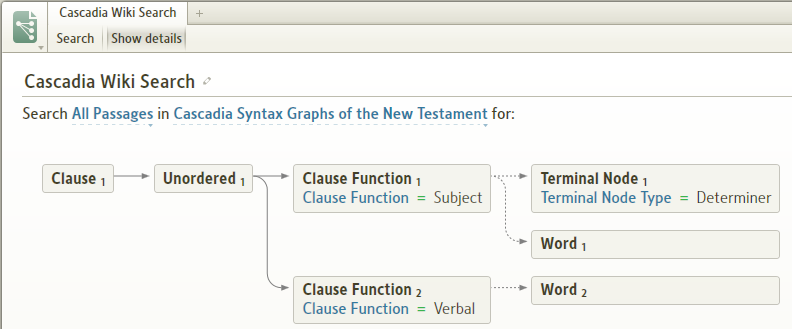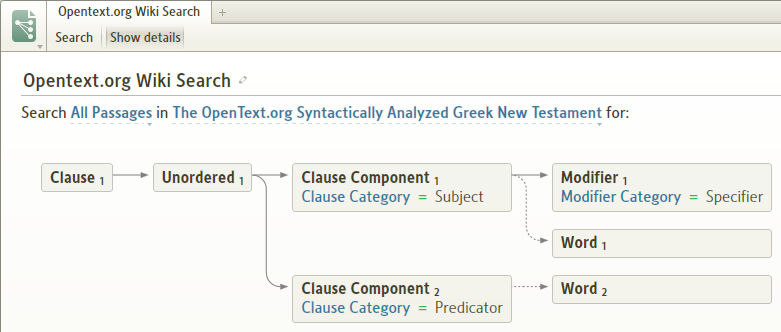A Strategy for Syntax Search
This is not a tutorial on any of the Syntax methods but merely advice as how to go about constructing a syntax query.
This description will tend to use the two simplest, and complete, Clause Visualizations schemes; namely Cascadia and Opentext.
Page Contents
Have a very good idea of the problem you are trying to solve
A problem involving relationships between words and their syntactical/semantic use is ideal for this type of query. A problem that involves simple relationships between words, or usage of words, is best addressed by a Morphological text query.
Construct a text query that will be your Control
It should capture all possible results but will also capture false positives because relationships are expressed by Proximity (distance). Be sure you have some valid results before you start the syntax query.
Word level detail
A verbal function is usually the simplest to complete as it usually involves only one word. The Subject may be more complex, but it is usually one word. So let’s skip the intermediate levels:


Complete any necessary morphological details to identify Word1 and Word2 and run the query. Ensure the results include the passages that provided the prototype query above!
If the subject has to be qualified, typically by the definite article then find the structure that provides it (eg. determiner, specifier) and try to avoid a word-level definition.


If the qualifier is not to be present then alter the attributes ie. is not present. If it doesn’t matter then use may or may not appear.
Unordered Group
Note that the above structure with [Unordered Group] is flexible as any other function can appear between the Subject and Verbal ones. In the absence of Unordered Group you would have to insert Anything between the two functions eg.


Also remember that in an Unordered Group, the specified components can appear in any order. By removing an Unordered Group, the search will only return results in which the components appear in the order in which they are set in the search.
Run the query
Now you should be getting valid results from your query, comparing them to the control set and begin fine tuning your query to eliminate spurious hits.
Is it complete enough?
Eventually you have to decide that the query is as good as it can be, because there is no guarantee any query will be 100% complete. At that point you have to manually determine what results are missing.
Some Forum threads with help on creating specific Syntax searches: